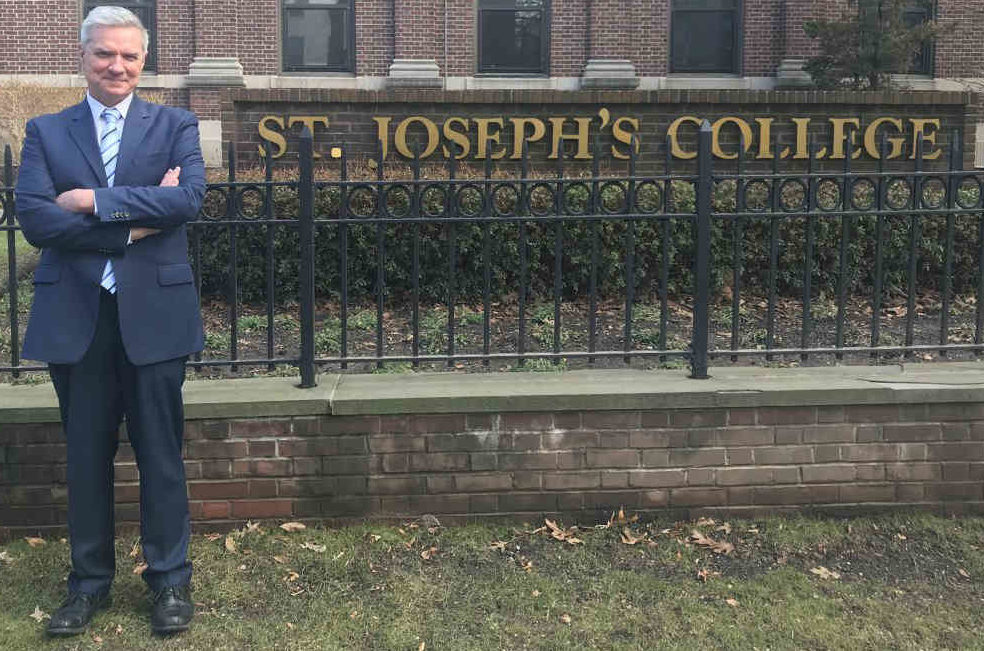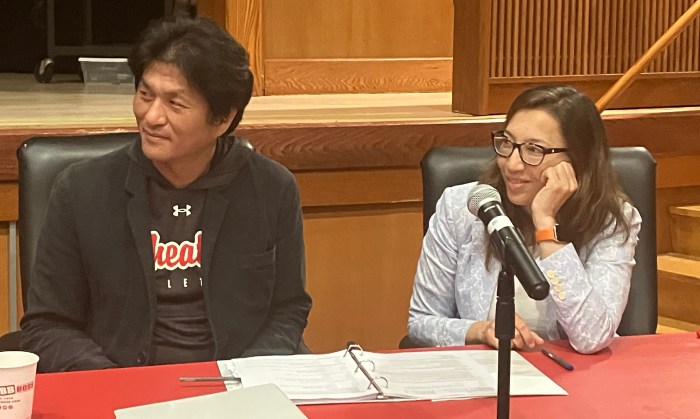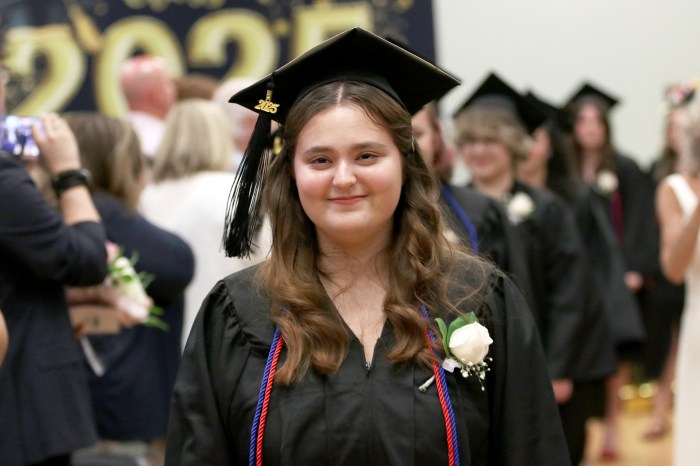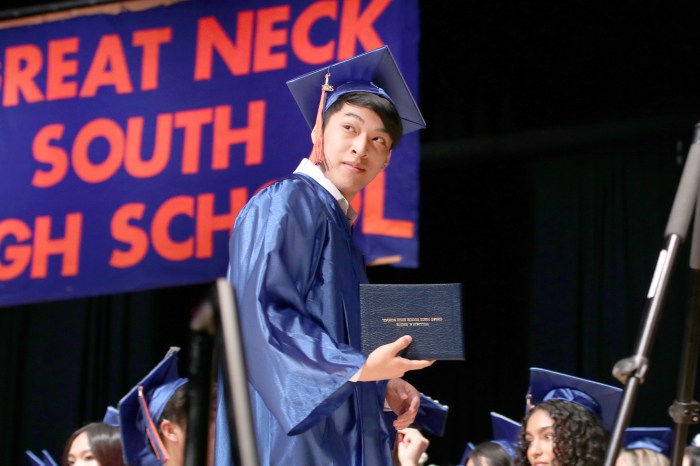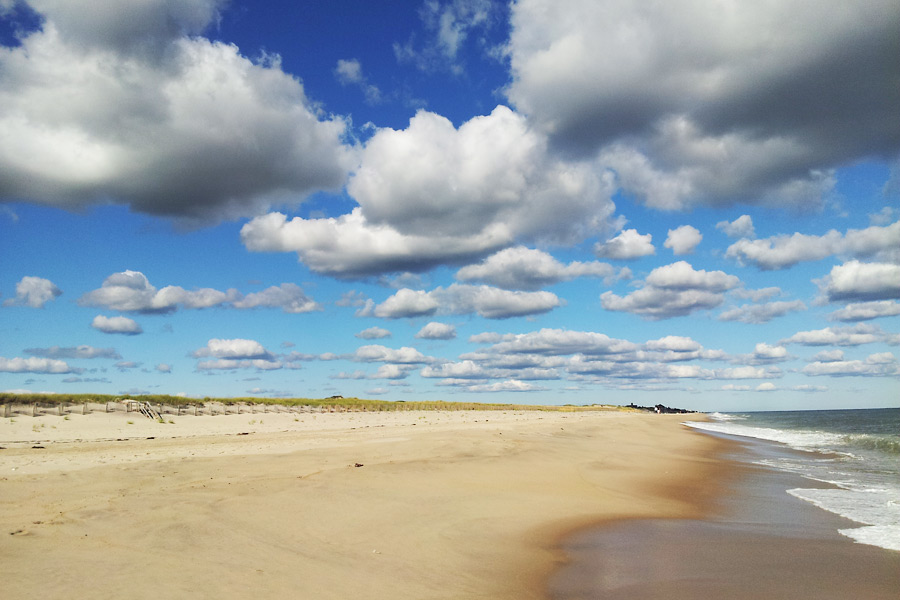St. Joseph’s College President Dr. Donald Boomgaarden is so committed to his students’ success that he now teaches some pupils himself, in a folk-music class he debuted last fall, and is leading again this semester. Boomgaarden, an 18th-century opera historian who plays the banjo and country fiddle, took over as the Clinton Hill college’s eighth top educator in July 2017. And teaching is still very much in his DNA, even after his 20 year career rising in the ranks of higher education, because it allows him to better connect with his students, he said. Boomgaarden, who splits his time between the college’s Kings County and Long Island campuses, sat down with us at his local office to discuss his time atop the university, and the plans he is orchestrating to lead it into the future:
Natallie Rocha: What would you say is your biggest success since taking the helm at St. Joseph’s?
Donald Boomgaarden: We were reaccredited by the national accrediting agency, the Middle States Association, after they came on campus to assess whether or not our programs and processes were in line with best practices. That’s not just my success, but really the success of the whole campus. We’ve also had some really great successes in enrollment. This term, for example, we had the highest total number enrolled since 2007, and if you look at the cycle of enrollments, a lot of schools have been struggling greatly, so we are happy with that in a very competitive market.
NR: You once said that “at a time when many colleges and universities are challenged by a rapidly changing world, St. Joseph’s stands for what is great about American education.” What do you believe is great about American education that your college uniquely offers?
DB: It’s true the world is changing but then, it’s not — there are certain things that are eternal. So, here, we want to give students all the latest training based on trends and models, but at the heart of it all are some really basic skills. Our focus on the tradition of liberal arts is a really important aspect for us. We don’t just pay lip service to it, we want our students to be good writers, to be able to express themselves, to all have the same senses of integrity, social responsibility, and justice, and to look at their education and their careers not as an end, but as a means to something else. The motto of the school is “To be and not to seem.” Students want a deep experience, and that is something we offer them that really sets us apart.
NR: What are the pros and cons of splitting your time between teacher and president roles?
DB: For a president to teach is a little unusual. But I started out as a professor — I spent 20 years as a professor — and that’s just a part of my personality I can’t give that up. I’ve taught at least one course a year, sometimes two, at every place I’ve worked. It’s a way to check in with the students, to discover what we could be doing better, and also what we are doing well. And it can be very affirming. Students don’t just see me as some distant figure, they see me as a person. I’ve always felt that the most effective leaders got down in the trenches and worked with the people. So that’s just part of my nature. I want the faculty to know that I understand their jobs, and how challenging they are.
NR: Aside from immersing yourself on campus, how else have you engaged with the larger Brooklyn community since you took over in 2017?
DB: What surprised me is that Brooklyn is actually a very friendly place — I wasn’t expecting it to be an easy environment. Well, maybe not an easy environment, but the people are extremely friendly, supportive, and kind. I’m delighted by how vibrant the local community is, and everyone tells me about how things have improved so much here over the last ten years, so I’m glad to be a part of that. The other thing that surprised me was that I really have two different student bodies on my two different campuses. The student body here represents the face of Brooklyn — it’s very diverse, it has kind of an international quality. The campus in Long Island, which is a little bit larger, is mostly young people who live out in that area. But both campuses together create a really exciting environment.
NR: What are your future plans for the university?
DB: We are building a new strategic plan right now that will become effective in the fall, since our previous plan is now coming to an end. In the forthcoming plan, we focus a great deal on some of the goals that the college has, and certainly a big goal is to continue to partner with other Brooklyn schools and institutions in order to increase our visibility in the community.




